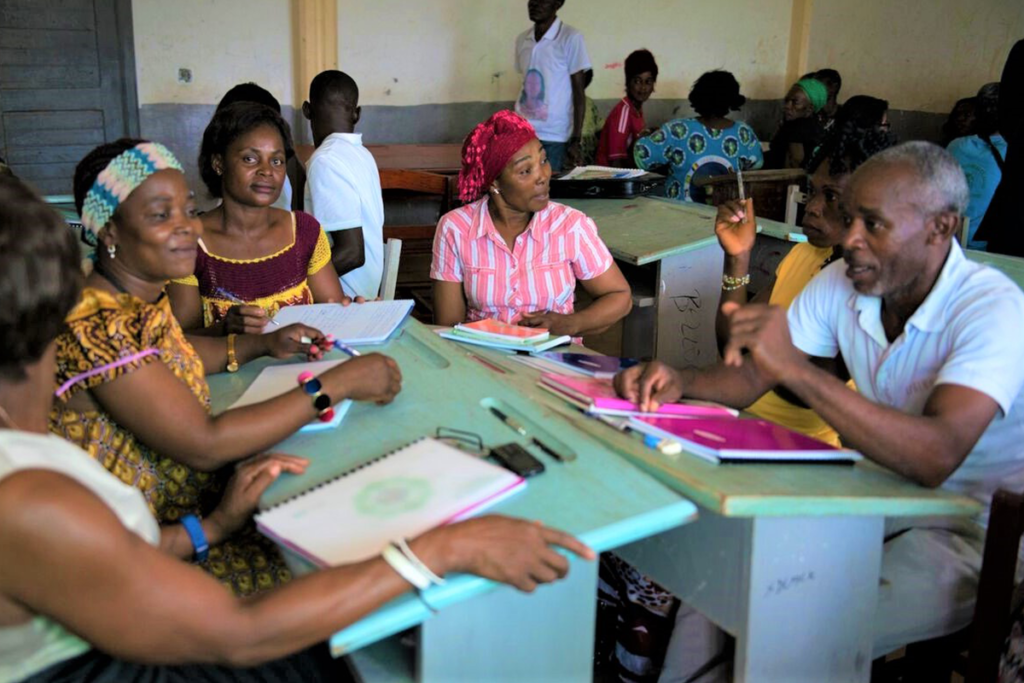Improving teaching quality to ensure that all children in school obtain the skills and knowledge they are meant to acquire has become a key objective internationally (UNESCO, 2010). Together with the growing recognition of the need to improve teaching, there is also a realization that the isolation teachers often face is not conducive to collaborative learning and improved teaching practices. In developing countries, many teachers, particularly those in rural areas teaching in multi-grade classrooms, often feel isolated and disconnected from their peers.
Developing countries have recently resorted to alternative models of teacher professional development, such as professional learning communities, or PLCs, to improve teaching quality and promote an approach to teacher development that is both social and contextual (du Plessis and Muzaffar, 2010). PLCs have become so popular that many education systems in developing countries, as well as education development programs, include a PLC component as part of an overall professional development plan. PLCs enable teachers to cope with isolation, strengthening solidarity, camaraderie and teachers’ self-confidence as professionals (Mogollon and Solano, 2011). Although PLCs are in vogue and have been recently implemented in many Latin American and African countries, the concept of PLC originated in and has been applied and studied more widely in the context of developed countries, mainly the United States and United Kingdom.
In this post, we further define PLCs and review existing evidence on the effect of PLCs. We then outline FHI 360-funded research that we have initiated to study PLCs in three low- and middle-income countries: Equatorial Guinea, Ghana and Nigeria.
How are PLCs defined?
Professional learning communities are a common category of professional development found in the literature. Despite numerous definitions, Stoll, et al. (2006) define these communities as “a group of people sharing and critically interrogating their practice in an ongoing, reflective, collaborative, inclusive, learning-oriented, growth-promoting way.” Projects in developing contexts often use different terms, such as teacher learning circles, to describe opportunities for teachers to learn along with other teachers.
PLCs reflect a shift away from traditional approaches of professional development which emphasize “knowledge FOR practice” to an approach grounded on the idea of “knowledge OF practice” (Cochran-Smith and Lytle, 1999). In this model, Darling-Hammond and Richardson (2009) report that “teachers work together and engage in continual dialogue to examine their practice and student performance and to develop and implement more effective instructional practices.”
What do we already know about the effectiveness of PLCs on teaching?
Two main systematic reviews have been conducted on the impact of professional learning communities on teaching practice. No studies from developing countries were included in these reviews.
In the first systematic review, Cordingley and colleagues (2005) examine the effect of collaborative continuing professional development (CPD) on both teaching and learning. CPDs can take many forms; the authors do not restrict their search for PLCs. Nonetheless, their findings are directly relevant for PLCs. The review concluded that collaborative CPD can impact a number of teacher outcomes, including: greater confidence; enhanced beliefs amongst teachers in their power to make a difference to their pupils’ learning; development of enthusiasm for collaborative working; greater commitment to changing practice and willingness to try new things; and enhanced knowledge and practice.
In the second systematic review, Vescio, Ross and Adams (2007) address the impact of PLCs on teaching practice. The authors find 11 research articles supporting the idea that well-developed PLCs positively impact teaching practices. One limitation pointed out by the review is that only a few studies provide significant detail on changes made to teachers’ practices and instead report on how teachers perceived their practice to have changed in broad terms. The majority of the studies reviewed adopt a qualitative approach, and only two provide a quantitative analysis.
What research gaps remain?
Additionally, while the academic literature on PLCs and their relationship to teaching practices has advanced in the context of developed countries, it is unclear to what extend the findings are also applicable to developing countries. Further research is warranted given the uniqueness of the contexts, social norms and structural conditions found in developing countries.
The way forward
Building on a theoretically grounded typology of PLCs, we are conducting research to contribute to the literature by exploring the relationship between participation in PLCs and teaching practices in developing countries. The primary objective of our exploratory research is to examine the relationship between teachers’ participation in PLCs, PLC model and features, and teachers’ classroom practices.
The research investigates the following questions:
- To what extent does participation in a PLC affect different teaching practices?
- Which PLC features support differences in teaching practices?
We are adopting a cross-country comparative analysis to examine PLCs and their effect on teaching practices using a common framework and shared indicators. To answer the research questions, we are collecting cross-sectional data through a teacher survey from three countries where FHI 360 currently has projects with a PLC component: Equatorial Guinea, Ghana and Nigeria. Our study targets primary education teachers in schools where the projects operate.
By employing regression analysis using teachers’ classroom practices as our main outcome of interest, we are examining relations between the level of participation in a PLC and teachers’ classroom practices. We are also employing propensity score matching (PSM) with a multi-level categories approach to match teachers based on their probability to participate in five frequency of participation categories, conditional on observable teacher characteristics. Regression analysis will be carried out for each country separately, but applying the same model and including the same variables.
We are conducting a descriptive analysis using data collected through in-depth structured questions as part of the teacher survey. Specifically, we are exploring teachers’ self-perception of PLC functioning, perception of which specific PLC features support increased levels of collaboration among PLC members and improved teaching practices, and specific PLC characteristics.
We anticipate our results contributing to the incipient literature on PLCs in developing countries and informing policy and programming around specific PLC features and characteristics that are most effective for promoting improved teaching practices. Data collection for our study is expected to be complete by July 2018 and results available by December 2018. In future posts, we will discuss our PLC typology and also share our findings and recommendations.
Photo credit: Neil Brandvold/FHI 360



